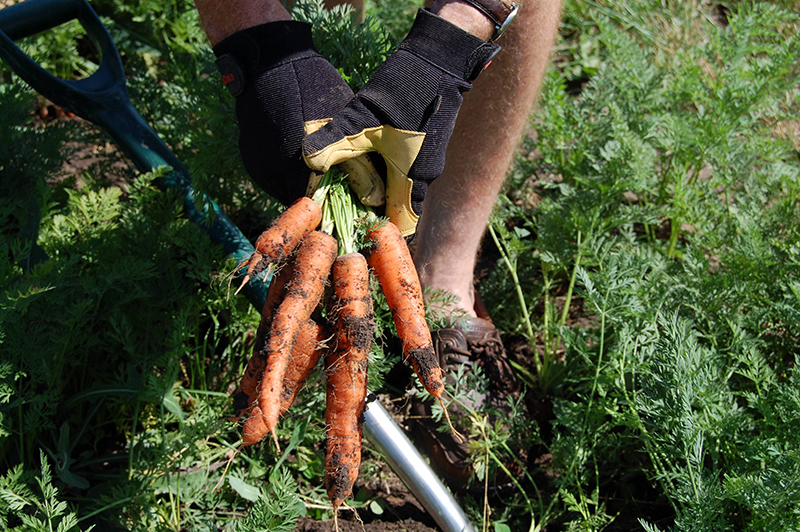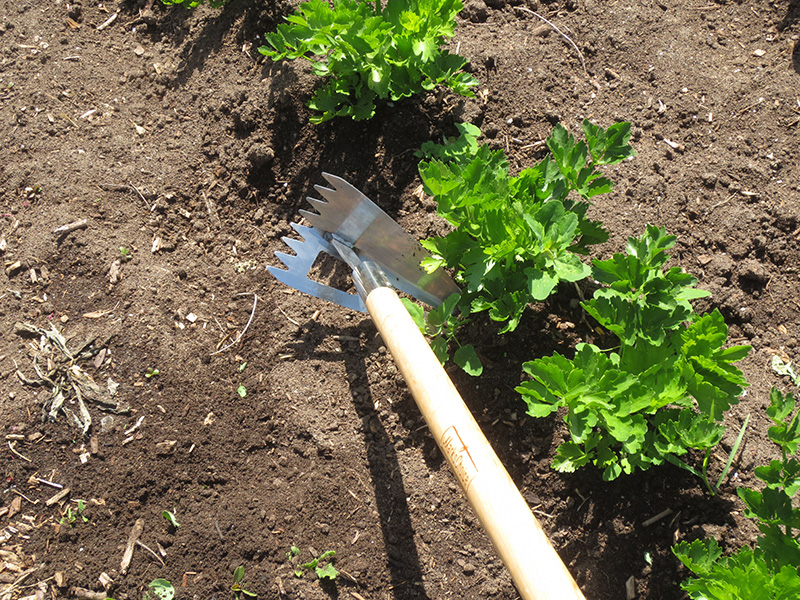Backyard Edibles
By Mark and Ben Cullen
The popularity of growing vegetables in your own yard has experienced unprecedented growth this spring, during COVID-19.
Our Top 2 tips for growing great vegetables are: lots of sun and proper soil preparation.
All veggies prefer a loose, organic rich soil. Dig finished compost at least 30 cm or 12 inches deep into your existing soil. If you are planting carrots or other root crops the key is to open the soil up with generous quantities of sharp sand – ‘builder’s sand’ or ‘Play sand’ in the hardware store. But NOT beach sand, which is too fine for the job. Our carrot soil is at least 30% sand by volume, and we dig it down about 50 cm deep (18 inches) to avoid root ‘forking’.

Some important tips to keep in mind if you wish your dreams of garden-fresh produce to be realized this summer:
- Water deeply. Keep in mind that all veggies need to get dry about 4 or 5 cm below the surface of the soil between watering once they are established. Over-watering is a bigger problem for most gardeners than under-watering. That said, it is important to water generously when the need arises. Tomatoes are especially thirsty as they grow: mulch them with 30 cm of fresh, clean straw or 5 cm of finely ground up cedar or bark mulch. This insulating layer will reduce watering by up to 70%.
- Tomatoes: tomatoes top the list as hungry plants. feed them in early June. Add an inch of finished compost around the roots of each plant before adding the straw mulch. You may choose to apply an organic or synthetic fertilizer specifically formulated for use on tomatoes.

- Double your harvest! Support tomatoes with a stake early in the growing season, before they start to crawl over the ground. We use the spiral stakes that eliminate the need to tie the plants up for support. They also last forever: you can leave this investment in future tomato crops in your will.
- Prune out the suckers that appear between the main limbs of the tomato plant. Look for a young green shoot that squeezes its’ way between a lateral stem and the main stem of the plant and just rub it out with your thumb.

Weed control. Interesting thing about controlling weeds is this: all you must do is move a fledgling weed seedling to kill it. Allow the weed to put down roots and you suddenly have an enormous job on your hands attempting to remove it. More than that, an established weed will compete with your desirable veggie plant, robbing it of valuable sunlight, water and soil born nutrients.

- The best method for removing young weeds is a BackHoe (Home Hardware exclusive). Mark designed this hoe himself: stainless steel, pre-sharpened and pointed for multi-use. Keep sharp using a bastard file.
- If you have large weeds in your garden pull them out by hand after a generous rain or after you have watered deeply: this makes the job much easier than pulling them from dry soil.
- Throw weeds into your compost bin if they are not in seed –otherwise send them out with your green waste.
Remember to enjoy the experience of growing your own food. The value, after all, is not just in the quality and taste of growing your own, but also the journey.



